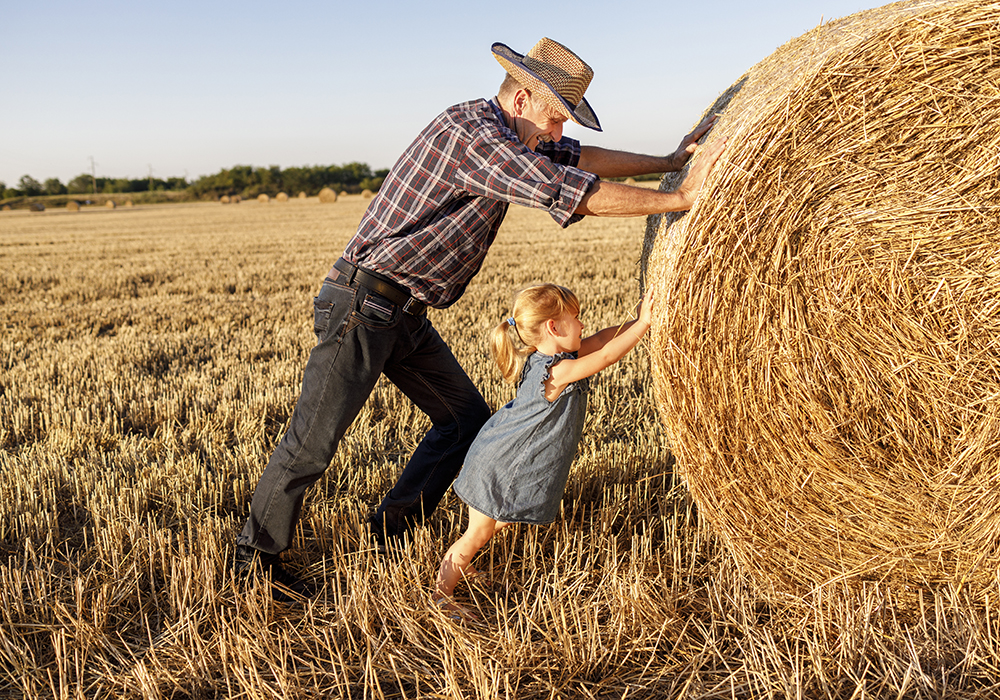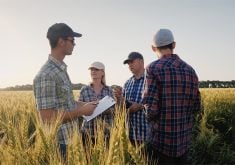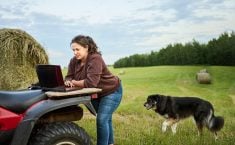Farm succession planning is complex. The transition of the family farm to the next generation raises several considerations, and one of the most important is how to transfer the farm in the most tax efficient way for the parents who are transitioning out and the children who are taking over.
It’s important to consider Capital Gains Exemption (CGE) rules in the Income Tax Act. If applicable, these rules may create beneficial tax results when a person transfers farm property, such as farmland, or shares of a farming corporation, to their children.
Read Also

Invigor Gold variety viewed as threat to condiment mustard
Invigor Gold, the canola-quality mustard developed by BASF, is on a collision course with Canada’s condiment mustard industry. It’s difficult to see how the two can co-exist.
For the purposes of this article, the focus is farmland and the implications of the CGE rules upon the death of an individual.
Consider a situation with two children who both want to continue farming. You provide in your will that upon your death, all 10 parcels of farmland will be transferred to your children as joint tenants. This is sometimes done with the best intentions to keep the family farm together.
However, tax considerations show this may not be the best option.
With respect to the CGE, the Income Tax Act allows individual taxpayers resident in Canada to claim the CGE in respect of capital gains realized on the disposition of qualified farm property. For farmland to be qualified, it must meet stringent conditions regarding the owner of the property, user of the property and use of the property.
The ownership period of the farmland is relevant for the CGE. To qualify, it must have been owned throughout the period of at least 24 months immediately preceding the date of disposition by an eligible owner.
An eligible owner under the act generally includes the individual, their spouse, their parents, their children, or a corporation, partnership or trust of such individuals. Notably, an eligible owner does not include a sibling.
It is therefore important that property be transferred in a direct lineal chain from parents to children (inclusive of spouses) or else the ownership period could be reset. This is important because other requirements can be satisfied at any time during the ownership period, including by prior owners of the farmland.
To qualify for the CGE, there is also a test with respect to use of the farmland. In at least two years during the ownership period, the gross revenue of an eligible owner from the farm business must exceed their income from all other sources for that period.
Also, during those same two years, the farmland must be used principally in a farming business carried on in Canada, and one or more of the eligible owners must be actively engaged in that business on a regular and continuous basis.
In most situations, if one of the eligible owners actively farmed the land for at least two years, this test will be met, and we always recommend getting the backup to verify the precise tests.
When applying this to the situation where 10 parcels of farmland are transferred to the two children jointly upon the parent’s death, a potential problem could arise, notwithstanding that the parents have satisfied the use test.
For example, the two children wish to separate their ownership of the farmland between them, and each child swaps their half interest in the farmland so they each become the sole owner of five parcels. For the half interest each child received from their sibling, the ownership period will be reset.
Therefore, the child cannot rely on their parent’s use of the land to qualify for the CGE unless the child is also actively farming the land, in which case they can satisfy the use test on their own. If consideration is not given to a situation where a child will inherit farmland and will not be actively farming it, that child may lose the ability to claim the CGE with respect to the farmland they acquired from their sibling.
It is also noteworthy that for the purpose of these rules, child is expanded to grandchild and great grandchild. So, if land passes directly from parents to children through multiple generations, a great grandchild who doesn’t even farm the land could potentially qualify for the CGE on the basis that the use test is satisfied by their great grandparent’s farming activities that occurred in the same continuous ownership period.
Currently, each taxpayer is entitled to a lifetime CGE of up to $1,016,836 on the disposition of qualified farm property. Loss of the ability to claim the CGE on the farmland in the previous example is therefore significant for both children.
The parents in the example may have thought they were treating their children equally and not have realized the potential tax benefits that have been lost when transferring the farmland into the joint names of the children. This is why it is important to consider the CGE rules in the context of estate planning with the family farm.
As a reminder, the CGE is only one of many considerations (tax and otherwise) in farm succession and estate planning. It is critical to review your succession and estate planning with your team of advisors.
Greg Kirzinger and Kade Kehoe are lawyers with Stevenson Hood Thornton Beaubier LLP in Saskatoon. Contact: gkirzinger@shtb-law.com / kkehoe@shtb-law.com.
This article is provided for general informational purposes only and does not constitute legal or other professional advice and does not replace independent legal or tax advice.















